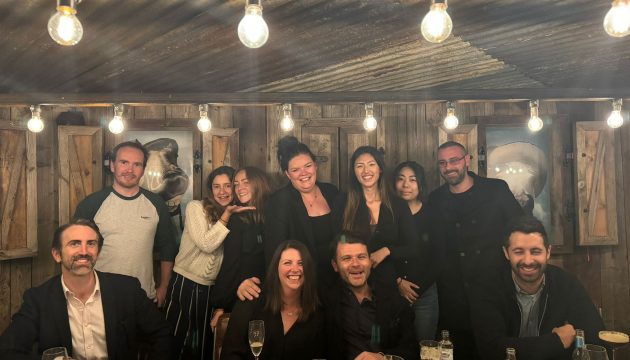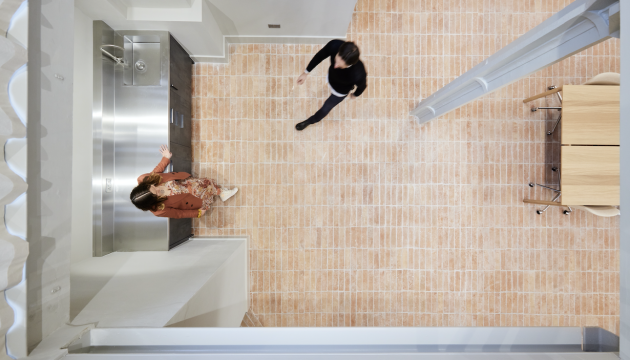There is a legendary story that WeWork used advanced data-capturing techniques to find out that people queued for coffee in the mornings. That got us thinking, could we do any better?
Since the beginning of 2021, we at TSP have been tracking our own office occupancy using Density people counting sensors (installed by our sister company Switched on Space). They give us real time data on our office usage by anonymously counting the number of people using the space.
But is the technology useful, and what have we learnt?
Reopening Project
When the ‘work from home’ guidance ended in July, we decided to reopen using a rota system. This meant that a maximum of 9 people could use the office while safely maintaining social distancing.
Looking at a heatmap of average occupancy data for July and August, it’s clear that the policy worked:

The office was busiest on the days we planned it to be, between core hours on Monday to Thursday, with a clear drop-off on Friday when more people work from home. Average occupancy didn’t peak above the 9-person capacity, meaning a safe and (mostly) Corona-free return.
As a boutique office, it’s easy for us to get a visual on how many people are present. But even so, the data is insightful. We can:
- Compare occupancy with our next stage of reopening in September
- Discover trends over time
- Learn what activities are best for bringing people together in the office
- See if policies are working
- Spot any capacity problems in good time
We can also drill further into the data, and see the busiest times for our meeting rooms and other parts of the office.
A TSP ‘personal best’ was set earlier in August, when 14 people attended a sushi and drinks evening, proving that free food and booze is a perennial winner even amongst commercial property professionals.
There’s a Wider Use Case
If you’re reopening in September, this type of data will:
- Accurately show how many people use the office;
- This indicates how keen people are to return to the office.
- Show your peak occupancy hours, allowing cleaning and other services to be provided when needed, and helping you to plan meeting times efficiently.
- Learn what initiatives work for bringing people together.
- Reconfigure space based on your actual usage.
It gets better. When a lease renewal or break date approaches, you’ll make better and more profitable long-term decisions, backed by data.
Did We Beat WeWork?
Ok, so now we know that the office is busy during the week and that people like free food. While this may not be breaking news, it is interesting to us, and it is very useful for helping our business to plan for the future. We know that our clients and fellow office data geeks value this type of insight too.
For more TSP data-driven insights, watch this space!
Want to build your own property data nerve centre? Contact us.
Featured Stories & Insights
 12th July 24
12th July 24
TSP Celebrates 15 Years: Q&A With Zac Goodman, Founder & CEO
This year celebrates TSP’s 15th Birthday. Co-founded by Zac Goodman in 2009, the business emerged...
Read More 12th July 24
12th July 24
Understanding Forfeiture of Commercial Lease
Have you ever considered what happens if a commercial tenant breaks their lease? Can the...
Read More 5th July 24
5th July 24
Can ‘core to floor’ move the dial in a polarised office market?
AS FEATURED IN ESTATES GAZETTE, 04.07.2024 “A core-to-floor approach is the middle ground office landlords...
Read More 2nd June 24
2nd June 24
‘Core to Floor’: The Latest Strategy Helping Landlords Keep Their Buildings Fuller For Longer
Traditional long-term leases and hands-off landlords don’t meet modern occupiers’ needs. These assets are struggling....
Read More 30th May 24
30th May 24
People talk about “customer-centric”, but what is it?
The term “customer-centric” is often thrown around, but what does it actually mean – especially...
Read More 28th May 24
28th May 24
Simplify Processes & Add Value in Property Management: Insights from TSP x Trustek
In this conversation between TSP and our PropTech Consultant partner Trustek, we explore meaningful, data-backed...
Read MoreView all
Let's Talk
Got a question? Use the form to get in touch.